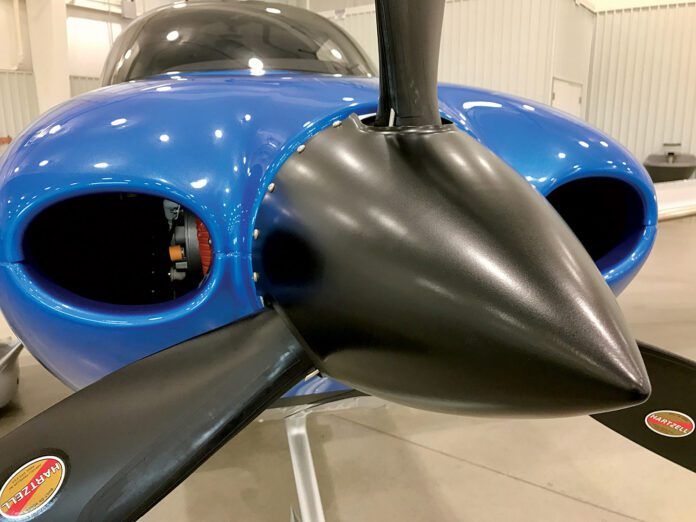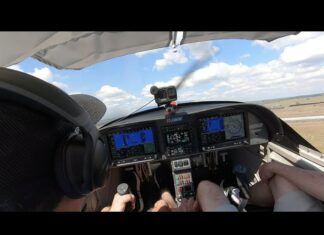Aviation Consumer’s recent composite aircraft structure tech reports reeled in some good questions from owners new to composite models. So we thought to do a short follow-up with some advice for caring for a new-to-you composite.
Time for a hangar
We think the cost of hangaring (even for overnight traveling) should be included in the operating expenses. Not unlike metal aircraft, storing a composite airplane inside will ultimately save on cosmetic blemishes and premature surface wear.
A fully enclosed hangar is generally best, followed by a shade port. Tying down the aircraft outside without any protection for years on end is asking for trouble. If a hail or wind storm doesn’t get it, the long-term exposure to UV of any exposed composite surface (either from being unpainted or a damaged painted surface) can degrade the surface strength of carbon/epoxy composite. Moreover, the problem goes deeper with translucent fiberglass/epoxy.
Deliberately exposed composites (to show off that cool carbon fiber weave) may need UV resistant gel coats. Painted composites that become damaged, exposing the underlying composites, should be touched up with paint as soon as practicable after determining no structural damage to the composite happened. But with hangars comes rash. The “corners” of the plane (elevator and wing ends) are most prone to damage during handling in the tight confines of a hangar. Properly use a tug that has a tow bar attachment designed for the aircraft. When towing it, consider investing in wing/elevator tip covers to absorb impact energy or cover potential danger points within the hangar with foam.
Cleaning it
Epoxy composites should clean up easily with just plain water. Preference is for distilled water or other types of purified water. Tap water can work, but depending on your location, it may contain additional minerals or other chemicals that may not play nicely with composites. Clean gently with microfiber cloths and allow it to air dry.
Start gently. Always try water cleanup as a first resort. If additional cleaning is required, most epoxies are pretty tolerant of mild dishwashing soaps and a little bit of extra elbow grease. Speaking of grease (and oils), the composite should be able to handle more aggressive hydrocarbon solvents if needed, but only as a very last resort. Be very careful about using abrasive pads such as Scotch-Brite or Bear-Tex; it’s better to use a bit more time and a little less abrasion to remove stains from composites.
Inspect it after a hit
Composites can be more impacted (bad pun intended) by hail, bird strikes and tools dropped on the surface than metals. That’s because it is possible for the composite part to look perfectly fine on the surface, but to contain internal damage (typically ply separations called “delaminations”) that can reduce strength and stiffness.
After known potential damage (maybe you dropped a wrench on a composite wing) or unknown damage (the airfield might have experienced hail in the vicinity), you should carefully visually examine the plane for any indications of damage, looking for chipped paint and dents.
At each location, use a coin tap to listen for changes in the sound (try first in a known good area; a delaminated area will sound “dead” though the sound change may be subtle). Any coin will do, though larger coins seem to do better (at least a quarter; the older half-dollars and dollars work very well).
In the case of known potential damage, if you know exactly where the drop occurred, you should conduct the coin tap regardless of whether or not visual indications are present. If the coin tap turns up any change in sound, you should contact a qualified A&P, shop or the aircraft manufacturer for further guidance.
If the suspected damage is in a critical flight control or primary load structure, it’s probably best to use a composites-savvy A&P who may have more sophisticated non-destructive testing equipment and knowledge to bring to bear.


